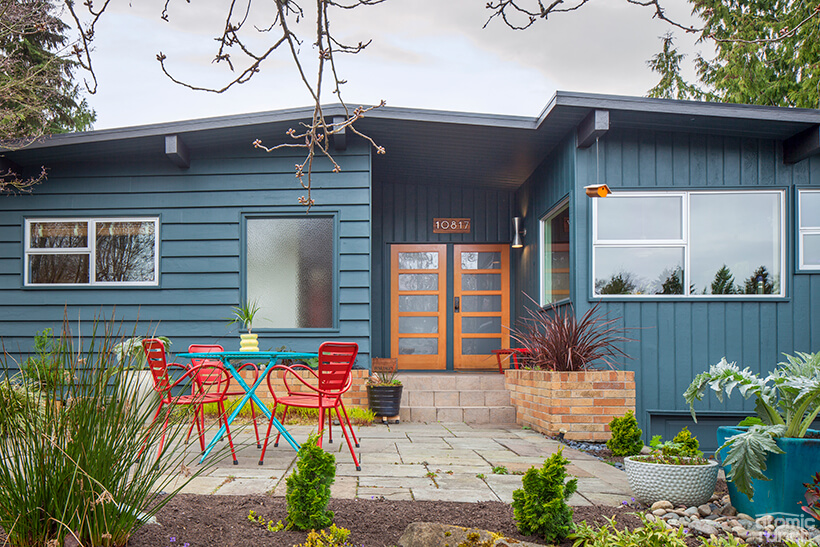Table Of Content

New Orleans, Louisiana is especially known for its Shotgun houses. Only one room wide, these homes pack a lot of living into a narrow space. The house shown here is an especially fine example of Victorian Stick architecture. Designed by architect Frank Furness, the house has "stickwork," or decorative half-timbering, on the exterior walls.
Casual Living Style
This is a great option for families who want to have more than 1 level but at the same time prefer the outside look of rambler houses. These rambler houses became extremely popular for mass construction during World War II. The “Suburban Ranch” style is the smaller and simplified version of the rambler home.
Plan 9158

A Neoeclectic home can be difficult to describe because it combines many styles. The shape of the roof, the design of the windows, and decorative details may be inspired by several periods and cultures. Triangular and tee-pee shaped homes date back to the dawn of time, but several 20th-century architects awakened interest in the geometric A-frame form. Regardless of the floor plan, split-level houses always have three or more levels.
Rambler style homes, a history of the whole country
With so much horizontal space, there was no need to build a second floor, although at some point they were added. This design benefits especially those who do not want or cannot climb stairs since everything you need is on a single floor. A clash of cultures occurred in this place, such as the Spanish Colonial Renaissance, which was single-level houses that had a central courtyard without a roof, or the Craftsman movement.
Open Floor Plan

Also known as ranch-style houses, these establishments usually have low roofs and protruding overhangs. Finally, the storybook ranch is a more ornate and decorative version of the rambler home. There is often a trim and different-shaped windows to give a more distinctive look to an otherwise traditional home. Instead of opting for the classic minimalist ranch style from earlier periods, the storybook ranch embodies a unique aesthetic with subtle differences from the simple rambler home.
Everything You Need to Know About the Ranch Style - ELLE Decor
Everything You Need to Know About the Ranch Style.
Posted: Mon, 11 Jul 2022 07:00:00 GMT [source]
Tudor Revival houses, however, merely suggest the structural framework with false half-timbering. This decorative woodwork comes in different designs, with stucco or patterned brick between the timbers. The name Tudor suggests that these houses were built in the 1500s, during the Tudor Dynasty in England. But of course, Tudor houses in the United States are modern-day re-inventions and are more accurately called Tudor Revival or Medieval Revival.
One of the most promising ventures was the Lustron Home by businessman and inventor Carl Strandlund. Vowing to mass-produce steel houses at the rate of 100 a day, Strandlund landed $37 million in government loans. Art Moderne truly reflected the spirit of the early and mid-20 century. For homeowners, Art Moderne homes were also practical because these simple dwellings were so easy and economical to build. But the Art Moderne or Streamline Moderne style was also favored for chic homes of the very wealthy. For those of more humble means, there was the Art Moderne Bungalow.
Connection to the Outdoors
That means the modern ranch houses include more clean lines and updated interior design. One of the first architects to use the rambler house style was Cliff May in the 1930s, inspired by southwestern ranch homes. A rambler house style is a house that is spread out over one floor and grows out instead of up. Traditional ranch-style homes—also called ramblers—are known for their simplistic, no-frills design elements.
The Colonial Revival style is based loosely on Federal and Georgian house styles and a clear reaction against excessively elaborate Victorian Queen Anne architecture. Eventually, the simple, symmetrical Colonial Revival style became incorporated into the Foursquare and Bungalow house styles of the early 20th century. During the 20th century, a variety of Spanish house styles borrowed ideas from Spanish Colonial architecture. Spanish Revival, Mission, and Neo-Mediterranean homes often have details inspired by the Colonial past. Despite the fact that this is one of the most sought-after styles of houses in the United States, it is still quite a bit cheaper than other styles.
Here’s what they look like and what features you can typically expect. As one of the most popular home styles across the country, ranch-style or rambler houses are versatile and appeal to a variety of homebuyers. With their minimalist exterior, open-concept interior, and relative affordability, you might just consider bumping a ranch house to the top of your list when house-hunting.
However, the benefit of having not as many load-bearing walls is that the floor plan can usually be converted with minimal fuss. There will be limitations to what can be done when attempting to fully redo a floor plan for a rambler home. After World War II, these ranch style homes became extremely popular for mass construction. They were reduced versions of the California versions, this time built with concrete slabs.
Driving through a neighborhood on the West Coast or in the Southwest, you may recognize the flat and sprawled out architecture of a rambler house. As this home style makes a resurgence, some may argue that the minimalist and simple nature of the ranch home never goes out of style. The raised ranch home style takes the rambler home and updates it with a raised walk-up or stairs, which are used to enter the home. Raised ranches are also called “split-entry,” with structures like garages or storage space underneath the kitchen, living room and bedrooms. During this process, a type of Spanish colonial style appeared- the rambler style.

No comments:
Post a Comment